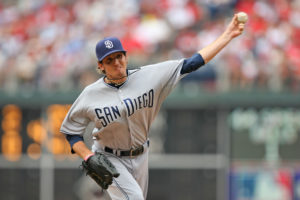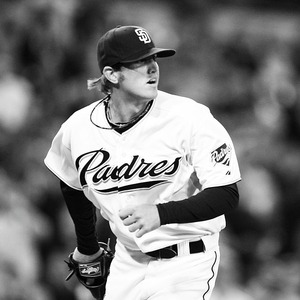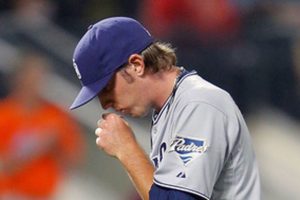Hello,
My name is Josh Spence, I was the 29th Australian to play Major League Baseball debuting June 24th, 2011. I crossed paths with Dustin when we were in the San Diego Padres organization together. Now years later It’s awesome to see the stepping stone he is creating in
regards to teaching the game of baseball, I’m very honored to contribute to LokationNation.
To give you a short bio and some perspective of my upbringing. I grew up in Australia loving baseball, but it wasn’t till I was 16-17 years old that I made the decision that I was going to attempt to come to the US and play collegiately. Before that I was very content with just playing club-ball with my friends back home because I enjoyed the game and in regards to the “talent pool” I was up against, my natural ability enabled me to have success (oh how that changed once I came to America). In Australia, there is no high-school baseball or college baseball (no College Athletics for that matter). I would play club-ball once a week for a 4-5 month season, twice a year. Once I turned 15yrs old I was eligible to play mens-league, so my parents enrolled me so I could get another game in each week. Joining mens-league, this is where I believe my game started to elevate.
Dustin has asked me a few questions and I think this is a good jumping off point
At what point did you decide you were going to work on your command?
As soon as I started playing mens-league. It was the first time I felt over- matched in every aspect of the game. I was 15, playing against guys in their 20’s to 40’s. Thankfully the teams I were with had quality people who engaged me with teaching moments a direction in my moments of failure (not once do I recall anyone telling me I had to throw harder in order to have success) and I am forever grateful for those opportunities with the Guild Lions and Geelong Baycats growing up.
matched in every aspect of the game. I was 15, playing against guys in their 20’s to 40’s. Thankfully the teams I were with had quality people who engaged me with teaching moments a direction in my moments of failure (not once do I recall anyone telling me I had to throw harder in order to have success) and I am forever grateful for those opportunities with the Guild Lions and Geelong Baycats growing up.
Looking back, It was a blessing in disguise growing up in Australia because when it was time to play, it was time to win. There were no college-scouts, no pro-scouts it was either contribute or I didn’t get a shot. With only playing 2 games a week, maybe being apart of 80 games for the year, I wasn’t about to mess with my opportunity
One of my first baseball memories about doing something I didn’t think much about, that ended up being a very useful tool in my development was growing up playing catch with my Dad. From when I was 9 to about the age of 14 I would only have one team practice per week, so most nights were spent playing catch in the backyard. This backyard was roughly 60ft long, I would stand at one end and he would stand down the other and we would play catch for 20-30 minutes. It would start with located fastballs then we would try and out-do each other with an arsenal of sliders and curveballs, trying to one-up each other after each throw. Then he would squat down like a catcher and I would throw “hitters” to him. We would see how many guys I could strike out and the umpiring was always awful as you could imagine. My dad has no background in baseball, there was no instruction given, I was 60ft away and I had to battle and figure it out myself. Little did I know that moments like this would be the foundation of the pitcher I was about to become, not only with making adjustments during the game but with how I handled umpires as a player.
 I guess to sum this all up, velocity was never a priority of mine growing up and a big part of that was the environment I was in. The type of confidence that was ingrained in me was that If I located my pitches enough times, I was going to get the intended result.
I guess to sum this all up, velocity was never a priority of mine growing up and a big part of that was the environment I was in. The type of confidence that was ingrained in me was that If I located my pitches enough times, I was going to get the intended result.
As a High school Pitching Coach (at Brophy College Preparatory in Phoenix, Arizona) the standard that I keep to help guide young pitchers to be ‘filthy in the strike zone’ is 65% or higher in the following 4 categories:
– 1st Pitch Strikes
– Two out of the 1st three pitches are competitive strikes
– Win the event counts
– The batter is On base or Out in four pitches or less
Hits, Strikeouts, BB’s, etc. are all results. I believe young pitches need to understand how to play this game from start-to-finish pitch-by-pitch not just their moments of play. It truly is a mentality. The information to make the proper adjustments is out there in every game and practice, now are you willing to harness that information (sometimes feedback from failure, both yours and others) to execute the necessary processes to win the game? That decision is up to you.
Was it your choice to have that higher skill set?
In my perspective, It’s everyones choice whether they want that higher skill set. Command to me is “the conscious ability to kinetically replicate the sequence of your delivery over and over again”. Although there is no one recipe to gain command, I think we can all agree it doesn’t just happen in the game. I believe this is the process to gain command:
set. Command to me is “the conscious ability to kinetically replicate the sequence of your delivery over and over again”. Although there is no one recipe to gain command, I think we can all agree it doesn’t just happen in the game. I believe this is the process to gain command:
– Functional warm-up: Are you replicating the same movements you’re about to endure on the field? Are a portion of these movements done at a high level of intensity? Does your warmup involve any ‘arm-care component?
– Dry-Work: It doesn’t have to be upper body arm-path work, it can be controlling the momentum of your lower half, timing the cues that enable you to generate power from the ground-up. Are you taking conscious receptions before you pick up a baseball?
– Throwing Program: Baseball is an everyday sport, Young players need to learn how to play catch 4-6 days out of the week. That being said there is a wide variety of throwing programs and I feel this is were young players hurt themselves. These different throwing programs are built so that players can consciously work on game fundamentals (trajectories you’re going to use in the game) whilst having adequate rest to recover.
– Bullpen: Bullpens aren’t a competition to see who can throw the nastiest 20 pitches in a sitting. Bullpens are to be done at a high-intent, so we can practice making adjustments at game-speed. Baseball is built around ‘failing fast’ to shorten the gap between ‘slump and success’, if you can’t do this unfortunately you’re not going to play much longer. Bullpens are not just an opportunity to work on our “stuff” but also practice in game sequences and fundamentals you may have to use on the mound, for example:
1. Varying looks and times while still executing your pitches. The game is going to speed up every now and again, can you practice a ‘long hold’ before executing your pitch?
2. ‘Phantom hitters’ with a tight strike zone, how difficult can you make the bullpen setting?
3. Practicing different times to the plate, do you have a slide step?
4. Lastly, how are you accountable for your bullpen. How much feedback can you harness? and how well can you apply that feedback into your throwing program, in hopes you can make the transition in your next bullpen?
– The Game: The game is purely feedback, Make all the adjustments you can and conscious notes of what you need to do to get better. Being able to replicate mechanics is a key component with commanding the baseball but being an honest self evaluator is almost equally as important. If we’re not giving ourselves honest feedback, we run the risk of making the same mistake again. You need to play this game with confidence and a chip on your shoulder, but dealing with a slice of humble pie can sometimes be just what you need to progress.
Time Allocated to command?
 The Pitching Delivery is not a basic fundamental and as you get bigger and stronger it will continue to evolve into a final product. In my perspective time allocated to command really comes down to the level of intent you’re willing to pose on yourself. What I mean by that is command is relative and everyone defines it differently. To me there are two categories of command ‘Pin-Point’ and ‘Zone’.
The Pitching Delivery is not a basic fundamental and as you get bigger and stronger it will continue to evolve into a final product. In my perspective time allocated to command really comes down to the level of intent you’re willing to pose on yourself. What I mean by that is command is relative and everyone defines it differently. To me there are two categories of command ‘Pin-Point’ and ‘Zone’.
– Pin-Point: Is just how it sounds, you aim for a spot and you hit that spot. Generally used for 4-Seam Fastballs or offspeed (in the zone) early in the count.
– Zone: Is where you aim for a spot with the understanding you’re going to hit that spot or miss in a specific area. Elite Pitchers have the ability to make a pitch spin tighter however losing a small amount of command in the process. The Pitcher will either hit their spot or miss in an area that will not let the hitter take advantage of it. Generally used for 2-seam fastballs and 2 strike offspeed.
Ultimately, how much initiative do you have as a player? You can work on command at anytime. for example, If you shagging batting practice for an hour and field thirty balls, maybe some are throwing to a teammate on the bucket and maybe some a rolled in to their feet. When you’re throwing it to your team mate, are you conscious of your delivery? your tempo? your rhythm? how well you’re kinetically linking from start to finish? are you aiming at a target? are you making adjustments from your last throw? and so much more possibilities! Elite athletes find ways to out repetition the competition.
How do you define success?
How I define success now is different to when I was a teenager and will be different in another 10-20 years. It can be measured in so many ways but one thing remains consistent; as beautiful as Baseball is, its not a fair game. If you’re not resilient and willing to change (evolve) as your baseball journey embarks year in and year out, you’re not going to last very long. Currently I would define success (as a player) being able to understand your strengths and putting yourself in situations where you are not forced to use a weakness in your game. The goal to achieve this would be, can you work so hard your remove doubt from your mind?

